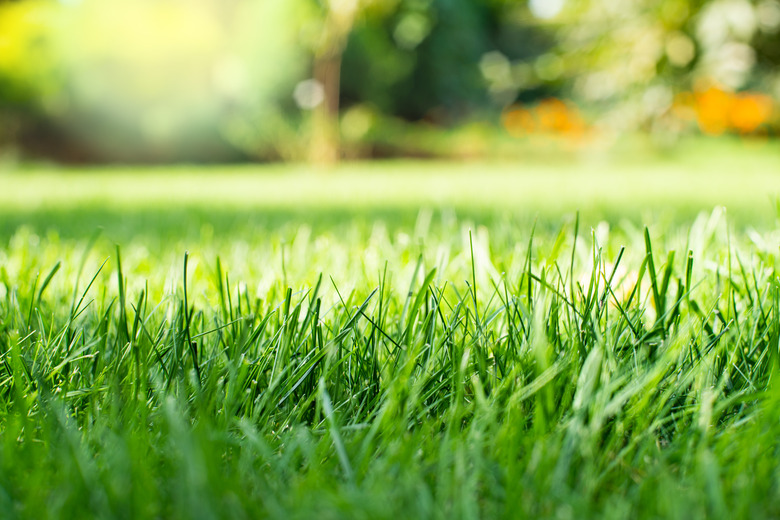Should I Mow The Lawn After Applying Weed Killer?
Weeds growing in the lawn can be the bane of a gardener's life. Broadleaf, grassy or grasslike weeds can disrupt the uniform appearance of a lawn and make it look messy and unkempt. Weeds can also take over quickly if left untreated. There are various methods for killing weeds in your lawn. Although you can pull up weeds manually, it's quicker and easier to use an herbicide in a lawn. Pre- and post-emergent lawn herbicides can be effective weed-control products, but to ensure you get the best results, you should know when to mow the lawn after applying these weed killers.
Tip
When you should mow your lawn after applying weed killer depends on whether you're using a pre- or post-emergent herbicide.
Pre-Emergent vs. Post-Emergent
Pre-Emergent vs. Post-Emergent
An important thing to consider in terms of timing your weed killer application is whether you're using a pre- or post-emergent herbicide. Pre-emergent herbicides are designed to control the growth of weeds shortly after they sprout, while post-emergent herbicides kill weeds that are already growing. Timing the application of these types of herbicides and knowing when to mow following application are key to their success.
When to Apply Weed Killer
When to Apply Weed Killer
When you're trying to rid your lawn of weeds, choose a selective weed killer to avoid damaging the grass. This means you can apply the herbicide to the lawn to target specific weeds without risking injury to your turfgrass.
Before applying post-emergent weed killer to your lawn, it's best to allow the weeds to grow out for a while beforehand; around five days is optimal. Giving your weeds extra time to grow means they'll have a greater surface area for absorption of the weed killer, which, in turn, will give the product greater efficacy.
It can be a good idea to think about the weather conditions when applying weed killer to a lawn. Waiting until after a forecast rainfall to apply a post-emergent can be beneficial, as this can help with absorption. Or you can water your lawn before application or apply the herbicide first thing in the morning to take advantage of the morning dew. It's also generally a better idea not to apply weed killer on a windy day, as this can cause the product to drift into areas where you don't want it.
Pre-emergent herbicides should be applied very early in the season — late winter to early spring — before weed seeds germinate, as these weed killers need about six to eight weeks to establish a chemical barrier at the surface of the soil to kill emerging weeds. Post-emergent options should be applied on an unmowed lawn later in the season to target established weeds.
Mowing the Lawn Afterward
Mowing the Lawn Afterward
Avoid mowing your lawn for at least two days and preferably longer after you've applied a post-emergent weed killer. Leaving it undisturbed for a few days will give the weeds more time to absorb the chemicals. For safety reasons, keep children and pets out of the area during application and at least 24 hours after, and avoid watering your lawn for at least two days, as this can dilute the weed killer. Ideally, you should time your application to allow for two dry, rain-free days afterward.
Pre-emergent herbicides, on the other hand, should be watered in to your lawn immediately after application for maximum efficacy. Mow only after a rainfall or after you've watered the treated area thoroughly.
Removing Weeds by Hand
Removing Weeds by Hand
Manual weed removal is best done when the weeds first appear so they don't have time to fully take hold. While wearing protective gloves, grasp the weed as close to its base as possible so you can also pull out the root system. For weeds with more extensive root systems, you can use a garden fork or other weeding tool to loosen the soil around the weed's base. You can then use the same method to pull up the weed alongside its roots.
References
- Home Depot: Vigoro Weed & Feed Instructions
- Lowe's: Control Weeds in the Lawn and Garden
- Gertens: Tips for When and How to Apply Weed Killer to Your Lawn
- University of Minnesota Extension: Control Options for Common Minnesota Lawn and Landscape Weeds
- Horizon: When to Apply Pre-Emergent Herbicide
- Do Your Own Pest Control: Pre-Emergent Herbicide Tips
